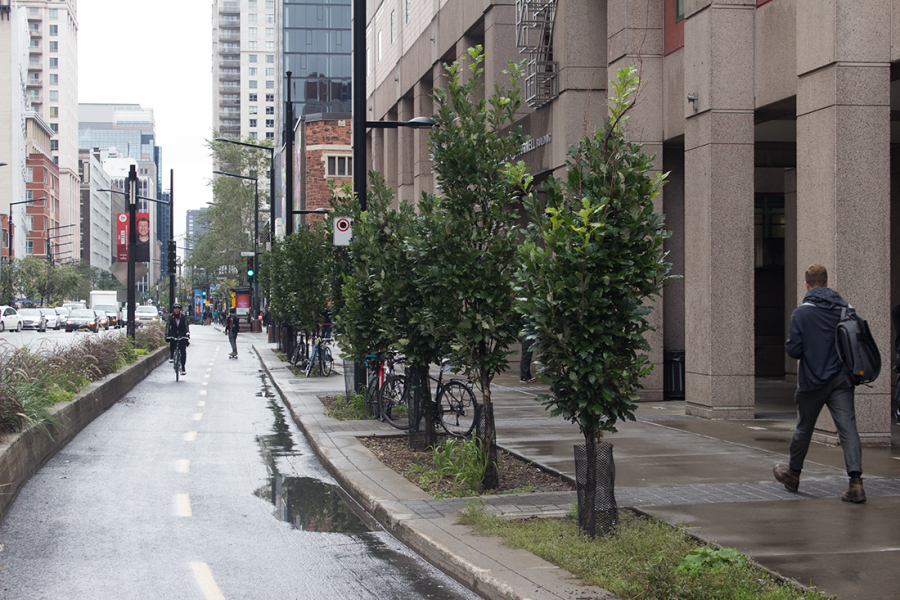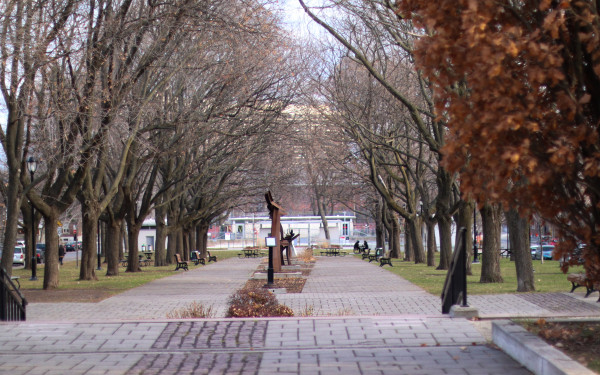Montreal North Greens Up to Fight Back Heat Islands
Éconord Co-op Gives Away Free Trees to Make the Borough Greener
The Coopérative de solidarité Éconord gives away free trees to residents and organizations of Montréal North to combat urban heat islands and improve the city’s forest canopy.
Within three years, Éconord has found a home for some 1,500 trees, exceeding expectations of the program’s administrators. Montreal North is a borough with a poor tree cover, which makes this initiative highly valuable and meaningful.
“In Montréal North the [tree] cover approximates 14 per cent,” says Dassyn Barris, greening and forestry project officer at Éconord.
Éconord’s project Verdir pour embellir launched in 2016 as a part of the Montréal’s Canopy action plan (Plan d’action Canopée). Citywide, the Canopy action plan aims at expanding the city’s tree cover—the surface covered by the trees’ canopy—from 20 per cent in 2012 to 25 per cent in 2025.
To meet the goal of 25 per cent of forest cover by 2025, Éconord reaches out to the residents of the district, to businesses and to various organizations.
Most of the lots where Éconord plants trees belong to private individuals, Barris explains. But in terms of number of trees planted per lot, businesses and organizations have the upper hand.
“This year, we had a secondary school [Calixa Lavallée] where we planted about a hundred trees,” Barris says with pride.
Calixa Lavallée started greening its campus in 2012. The planting of trees and shrubs turned an empty lot of six hectares of asphalt into a peaceful “cooling square” named Place fraîcheur.
A report published the same year by Marie-Ève Levasseur, from the Institut national de santé publique du Québec gives an eloquent demonstration of the immediate benefits of greening urban spaces. At the Lavallée cooling square, thermic reduction ranged from one degree to almost three degrees.
Thermic reduction and tree coverage improve as trees grow and project more shade. “It’s really a long-term investment,” says Barris, “and it’s rare to see long-term investments like that in environmental projects, which make it really interesting.”
According to the city’s 2012 Canopy action plan, augmentation of the canopy indicator by five percentage points represents the planting of 300,000 individual trees. In terms of coverage, it represents more than 2,300 hectares of land, or 65 times the size of the Lafontaine park.
Citywide, the Société de verdissement du Montréal Métropolitain (SOVERDI) is in charge of coordinating the implementation of the plan on private lots. Instrumental in Éconord’s success is SOVERDI’s support says Barris.
SOVERDI funnels money and expertise to the programs “Éco-quartiers” of the city, themselves managed by community organizations such as the co-op Éconord.


_600_832_s.png)

2_600_375_90_s_c1.jpg)
1_600_375_90_s_c1.jpg)
4_600_375_90_s_c1.jpg)
